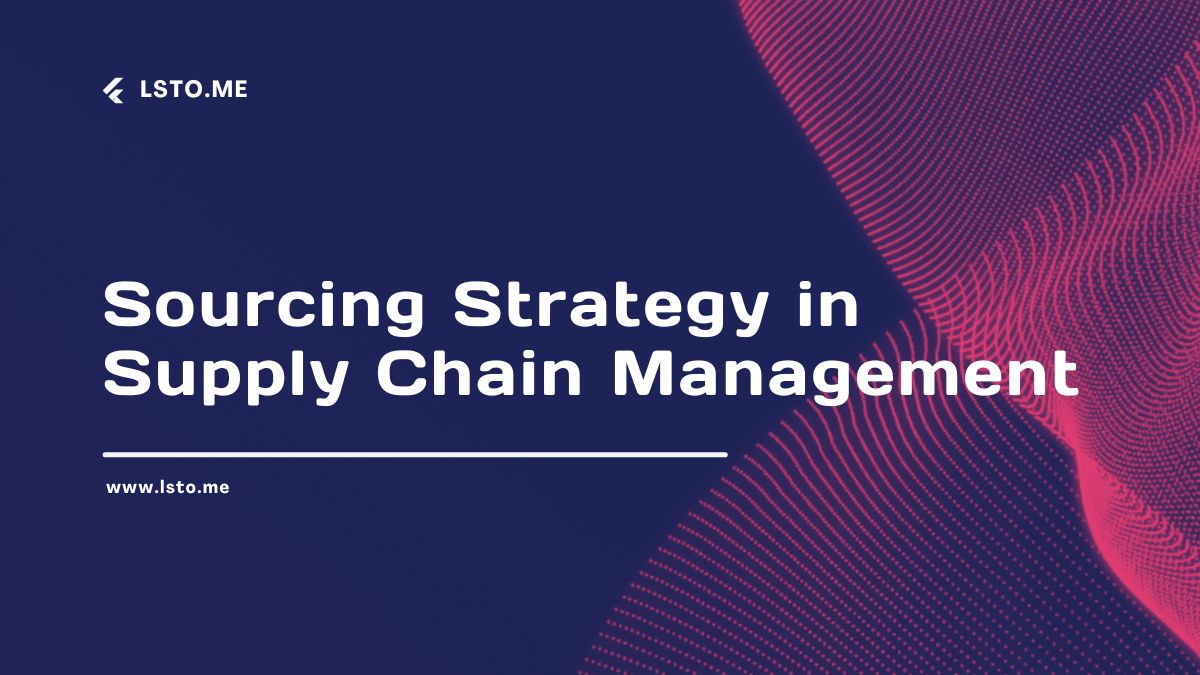
In today’s dynamic business environment, supply chain management plays a critical role in ensuring operational efficiency and maintaining a competitive edge. One vital aspect of supply chain management is sourcing strategy, which involves the procurement of goods and services from external suppliers. In this blog post, we will explore the significance of sourcing strategy and its impact on overall supply chain performance. By understanding and implementing effective sourcing strategies, businesses can optimize costs, enhance quality, mitigate risks, and build resilient supply chains. Let’s dive in!
1. Supplier Relationship Management:
Supplier relationship management is a vital aspect of sourcing strategy in supply chain management. This process involves building and maintaining strong, collaborative relationships with suppliers to ensure that the organization receives high-quality goods and services at competitive prices. A successful supplier relationship management program depends on clear communication, mutual trust, and a focus on long-term goals rather than short-term gains.
Effective supplier relationship management begins with selecting the right suppliers for the organization’s needs. Once selected, it is essential to establish clear expectations regarding delivery times, quality standards, and pricing. By developing open lines of communication between both parties early on in the partnership, organizations can establish a foundation of trust that will help them weather any challenges that may arise along the way. Additionally, it is important to maintain transparency throughout all aspects of the partnership, from negotiations to payment terms and beyond.
2. Total Cost of Ownership (TCO) Analysis:
Total Cost of Ownership (TCO) analysis is a critical tool in sourcing strategy for supply chain manage ment professionals. It involves evaluating the complete cost associated with procuring goods or services, including indirect costs such as maintenance, repairs, and disposal costs. The goal of TCO analysis is to help businesses make informed decisions by taking into account all the expenses that come with procuring a product or service.
TCO analysis offers several benefits to businesses, including helping them identify the true cost of ownership for each supplier and product they use. This information can be used to negotiate prices, select better suppliers and products and develop more effective procurement strategies. Additionally, TCO analysis enables companies to assess risk factors related to procurement by identifying potential pitfalls such as hidden fees or unexpected repair costs that could affect their bottom line over time.
3. Risk Management:
Risk management is an essential part of any sourcing strategy in supply chain management. A supplier’s failure to meet delivery deadlines, quality standards, or ethical practices can significantly impact the entire supply chain. Therefore, incorporating risk management practices into a sourcing strategy can help mitigate potential disruptions and minimize their impact on business operations.
To effectively manage risks in the supply chain, companies must identify and assess potential threats. This includes analyzing factors such as supplier reliability, geopolitical risks, regulatory compliance hazards, and natural disasters. With this information at hand, companies can develop strategies to address these risks proactively.
A proactive approach to risk management allows businesses to identify potential issues before they occur and implement measures to prevent them from causing severe disruptions. For example, a company may choose to diversify its supplier base geographically or invest in contingency plans for critical components or raw materials.
4. Sustainable Sourcing:
Sustainability has become a key consideration for businesses worldwide. With climate change and environmental degradation posing grave threats to the planet, companies are becoming more cognizant of their impact on the environment. Sustainable sourcing is an approach that aims to procure goods and services while minimizing negative impacts on the environment, society, and economy.
Sustainable sourcing involves considering environmental factors such as water usage, carbon footprint, and waste reduction in procurement decisions. It also takes into account social factors such as labor practices, human rights, and community engagement. In addition to these factors, sustainable sourcing focuses on economic considerations such as cost savings through resource conservation and increased efficiency.
In supply chain management, sustainable sourcing is a critical aspect of a successful business strategy. By adopting sustainable sourcing practices throughout their supply chains, companies can create value for customers while reducing environmental impact at every stage of production.
5. Continuous Improvement and Innovation:
In the world of supply chain management, sourcing strategy is key to success. But a successful sourcing strategy is not static; it must be dynamic and constantly evolving. This means that businesses need to embrace continuous improvement and innovation in order to stay ahead of the curve. By continually striving for better outcomes, companies can optimize their supply chains, reduce costs, and improve overall performance.
One way to achieve this is by leveraging technology to drive innovation. For example, the use of artificial intelligence and machine learning can help businesses identify potential risks or inefficiencies in their supply chain operations before they become major issues. Additionally, advanced analytics can be used to gain insights into supplier performance and identify areas for improvement. By embracing these tools and processes for continuous improvement, companies can stay ahead of competitors in an ever-changing landscape.
Ultimately, successful sourcing strategies require a commitment to ongoing evolution and optimization.
Conclusion:
Sourcing strategy is a vital component of supply chain management, enabling businesses to optimize costs, improve quality, manage risks, and drive innovation. By prioritizing supplier relationship management, conducting comprehensive TCO analysis, implementing effective risk mitigation measures, embracing sustainability, and fostering a culture of continuous improvement, organizations can build resilient and agile supply chains. A well-executed sourcing strategy not only enhances operational efficiency but also contributes to the overall success and sustainability of the business.




